I went to Japan last month. As we walked around I found myself enjoying the little differences more than anything else. Since returning, I've found myself talking about them a lot and thought it'd make for quite a good alternative write up of the trip.
(if you're interested in seeing some selected pictures, you can find them on my photos site)
The doors on the left side will open #
We made pretty good use of the metro in both Tokyo and Osaka in quite a short space of time. The summary here is that it's an amazingly easy set of interconnected systems that runs like clockwork, as expected. Some features I particularly liked...
-
Ticket gates are open when you arrive. Scanning the IC card is instant and the barriers don't need to close if you have enough money. The barriers only close if there is a problem. This makes moving a crowd through a set of gates much faster than in London where gates sometimes take longer to open than others and require you to stop walking.
-
Some older trains have a special design of seat that can be flipped to make a reasonably comfy seat for both directions of the route or to make a group of facing seats. There's a video here of a similar more modern design in Sydney.
-
The TFL map is famous for being easy to use, however one thing I'd love help with is navigating complex underground stations such as Bank or Green Park. I think the main problem is that it's hard to picture how the tunnels connect in 3D space.
This is something many stations in Japan had sorted - I think they're a work of art.
-
For quite a long time before the doors are about to close a nice little jingley tune plays.
-
There is excellent signage on the platforms to explain how to get on and off the train. In London we are still very bad at this deceptively simple task.
-
There is amazing support for wheelchair users. We saw two station staff arrive 30s before the train arrived, stand at exact spot for the correct door, and prepare a ramp. When the train arrived the wheelchair user was there ready and the staff helped them off the train without any delay to the train. TFL is getting better but this simple system was amazingly effective too.
-
In Osaka, many of the subway cars had holding handles at three different heights for different heights of passenger.
-
Something that was confusing for us was that some trains turn into trains for other lines when they get to a central station, and you can just remain on the train.
-
Dot matrix indicators have better resolution, colors, etc. We just have orange...

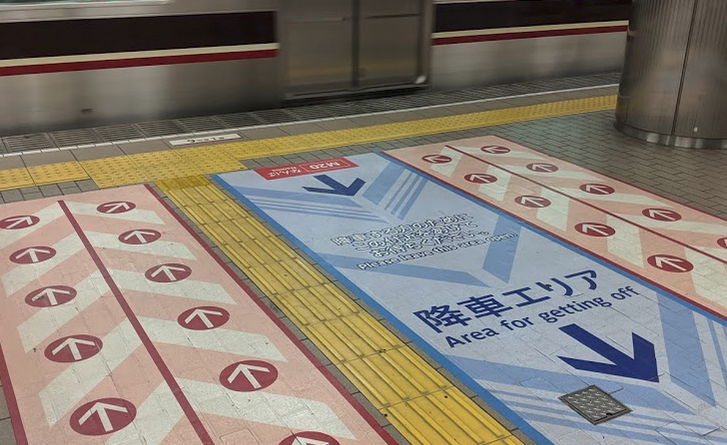 this is where you stand for this door
this is where you stand for this door
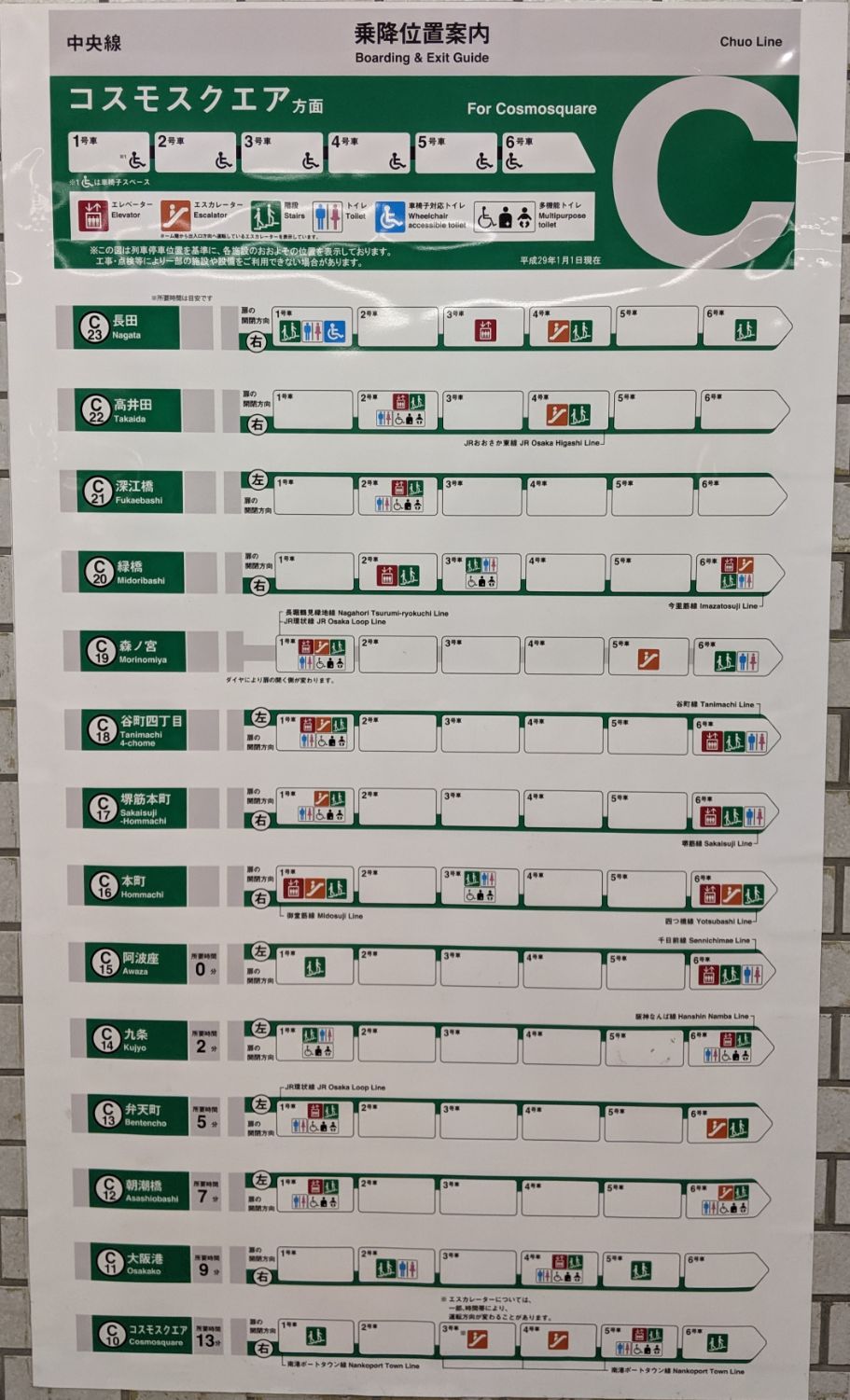 this is how you choose where to wait based on the destination stop
this is how you choose where to wait based on the destination stop
Was there a peach fanta in that one? #
While playing real life pokemon to collect our favorite soft drinks we covered quite a lot of ground on foot too.
 vending machine in the middle of a residential area with very few people
around
vending machine in the middle of a residential area with very few people
around
Random street-based observations follow...
-
Some busy streets have directional pavement lanes - sadly they didn't seem to be very effective.
-
Public spaces generally have much greater availability of seating.
-
Some areas have amazing painted manhole covers. Like this one near the instant ramen museum in Osaka.
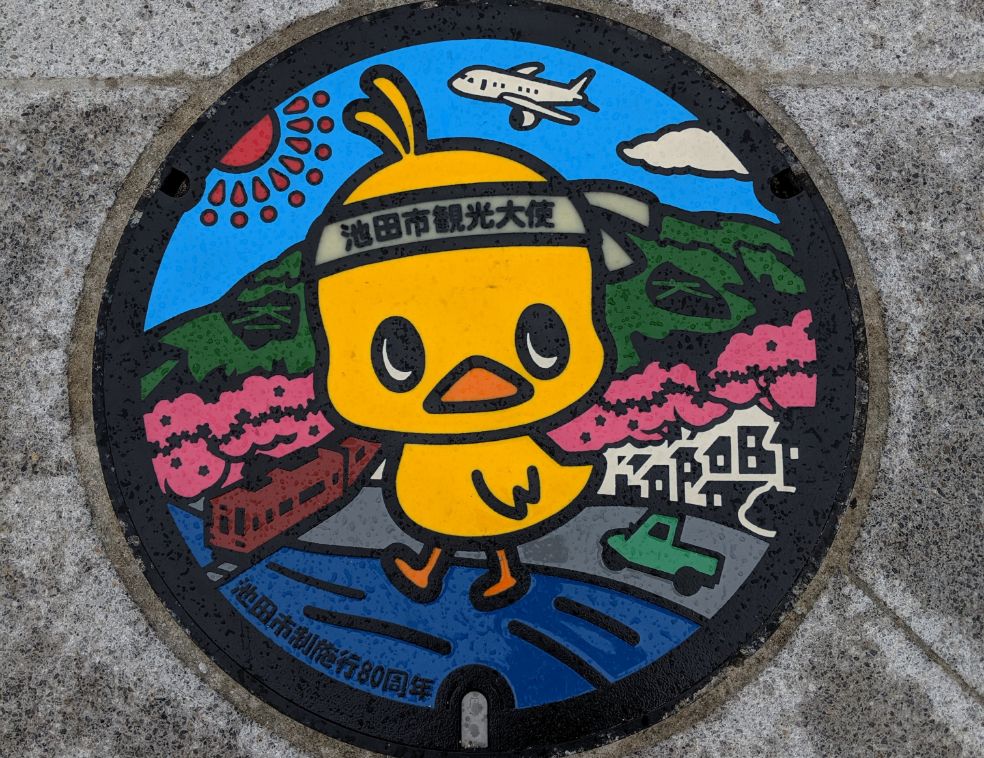
-
Using horns in cars seems to be much less common. Streets are generally quiet in comparison.
-
It's frowned upon to use your phone while walking along. People do it but it's far less common. I found myself trying to stop and use my phone instead.
-
In Osaka, it seems one can cycle anywhere, pavement, road, crowded shopping centre. Watch out for them but they're probably already watching out for you.
-
There are chair lifts in some public spaces to help with steps. This isn't very common but I did notice this in a few different places. I wonder if this would be possible without vandalism here...
Shinkansen #
 waiting for the train experience of my life - refreshing drink in hand
waiting for the train experience of my life - refreshing drink in hand
- Each row of train seats lines up with a window. oh. my. gawd. Sure, we have bigger windows but our trains still feel more claustrophobic and dark. I love looking out the window while travelling so this was a win for me.
- We might have missed something but it seems there's a set rate for the trains for each route. We paid about £120 to go from Tokyo to Osaka and it didn't seem to make any difference how far we looked ahead. I'd take predictability of over the mess we have but I still think there are better ways to price tickets than either system.
- Shinkansen drivers dress like pilots - seems appropriate for a train who's ancestry is based largely on aeroplane design.
- All coaches are quiet coaches. If you want to make a call then you can just walk to the vestibule area. People play by the rules too, unlike the fuckers that chat in the quiet coach here...
- Arrow displays light up to say which side to alight while the train approaches the platform. There is also an announcement when the stop will not last long and encourages people to prepare to exit around 10 mins before the train stops. We stopped for just over 2 mins in Nagoya.
- Passengers leaving the train take rubbish and bin it on platform. This matches the general rule of taking rubbish home with you. I really appreciated this too.
- Shinkansen trains have numbers like flights. This number is printed on your ticket. While it's a small touch, it makes it easy to know you're on exactly the right train.
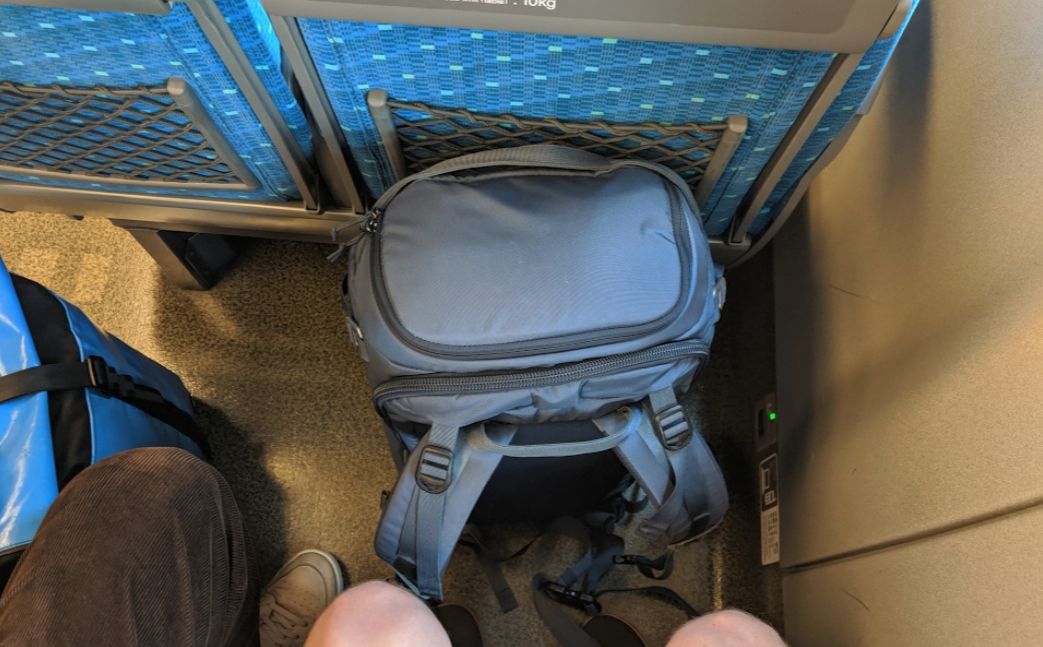 look at all that space for my knobbly knees!
look at all that space for my knobbly knees!
Please feel free to use a toilet #
I'm not sure what the rest of us were doing while the Japanese were designing their toilets but we got a long way behind. Many have heated seats and some even play music.
Relative to my experience of finding public toilets in the UK, public toilets in Japan are everywhere. They are mostly very clean and well looked after if not modern. Foam soap (to reduce the amount of waste) is much more common, while hand dryers are much less so. I noticed (after some time) that many carry a small hand towel with them - I've tried to make this a habit of my own too. This means I don't need to use hand dryers (I hate hand dryers but that's another post...).
In the UK there are 'public' toilets in places like pret. However, locked unless you buy something and get the code on the receipt. In Japan, having a toilet was something to bring people in. Feel free, don't mind if I do!
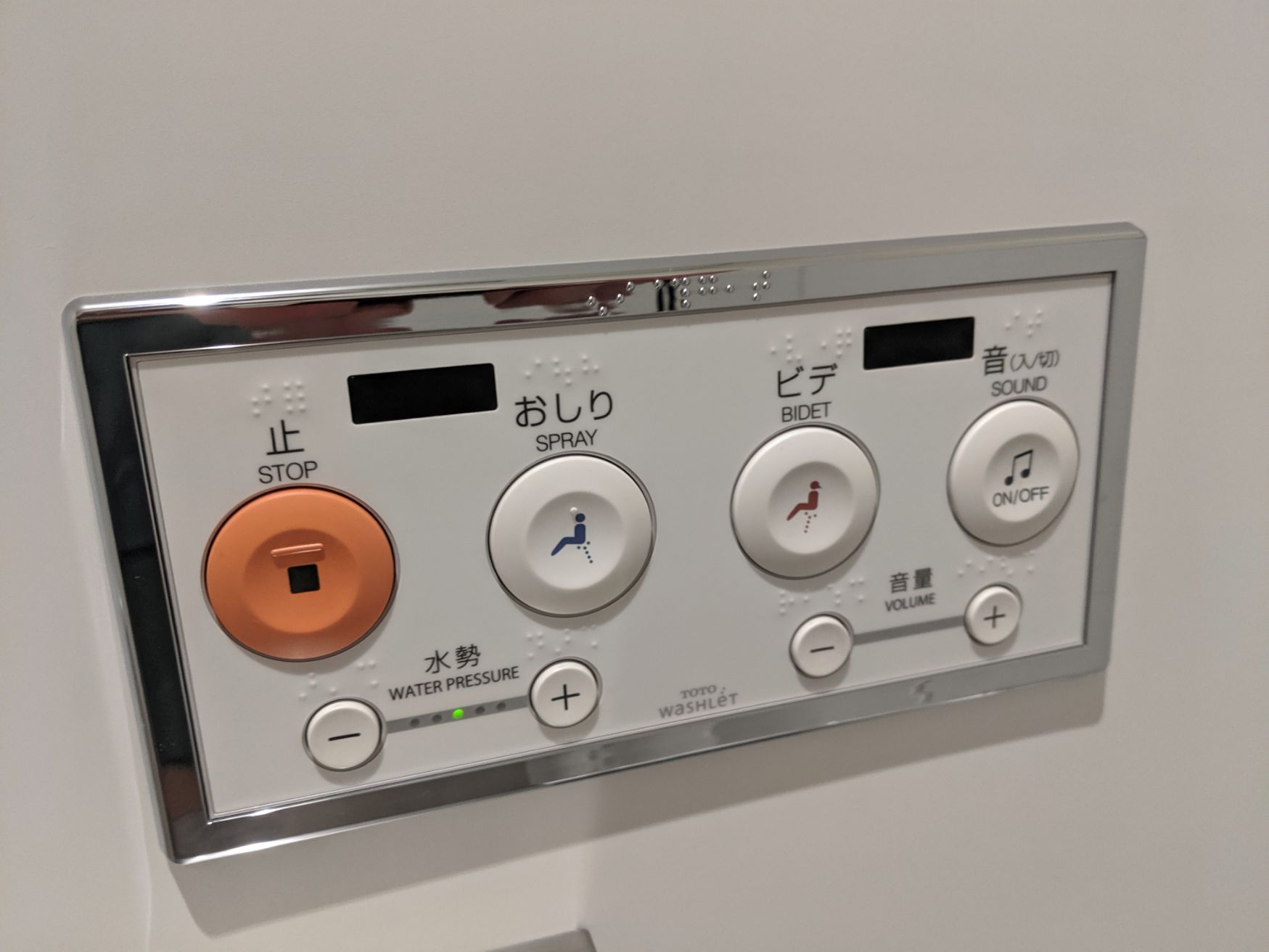 Can you spot the music button?
Can you spot the music button?
 my bulltet train themed hand towel from the Kyoto rail museum
my bulltet train themed hand towel from the Kyoto rail museum
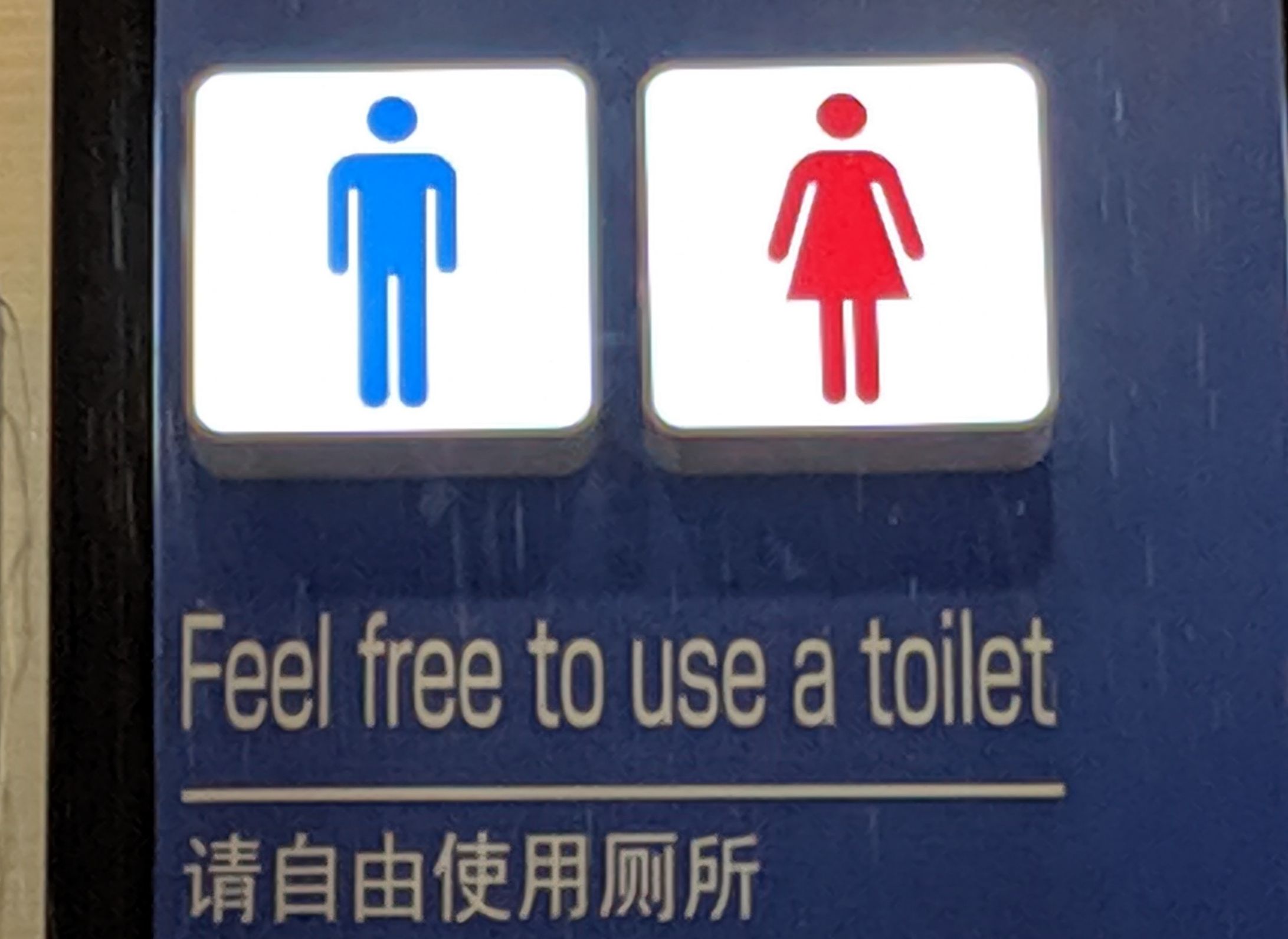 Don't mind if I do!
Don't mind if I do!
Would it be OK to have the bill so we can start waiting for the card machine? #
In Japan they don't seem to have that dance at the end of the meal out. When you are ready to go you just walk up, pay, and leave. I appreciated that. Bells on tables were also a great idea.
Eating while walking around was also not a thing - we learned that people just think you're strange if you do. To help with this, even in little corner shops (Family Mart etc) they often have a small table areas and even a sink to wash your hands with after eating (things purchased in their shop).
Some things didn't make much sense to me though...
like these pre-fried chips...

or this bum beer

this salad

or this small butter child advert

Is that it? #
Nope, I'm going back but not sure when. Below are some more photos that didn't really fit above...
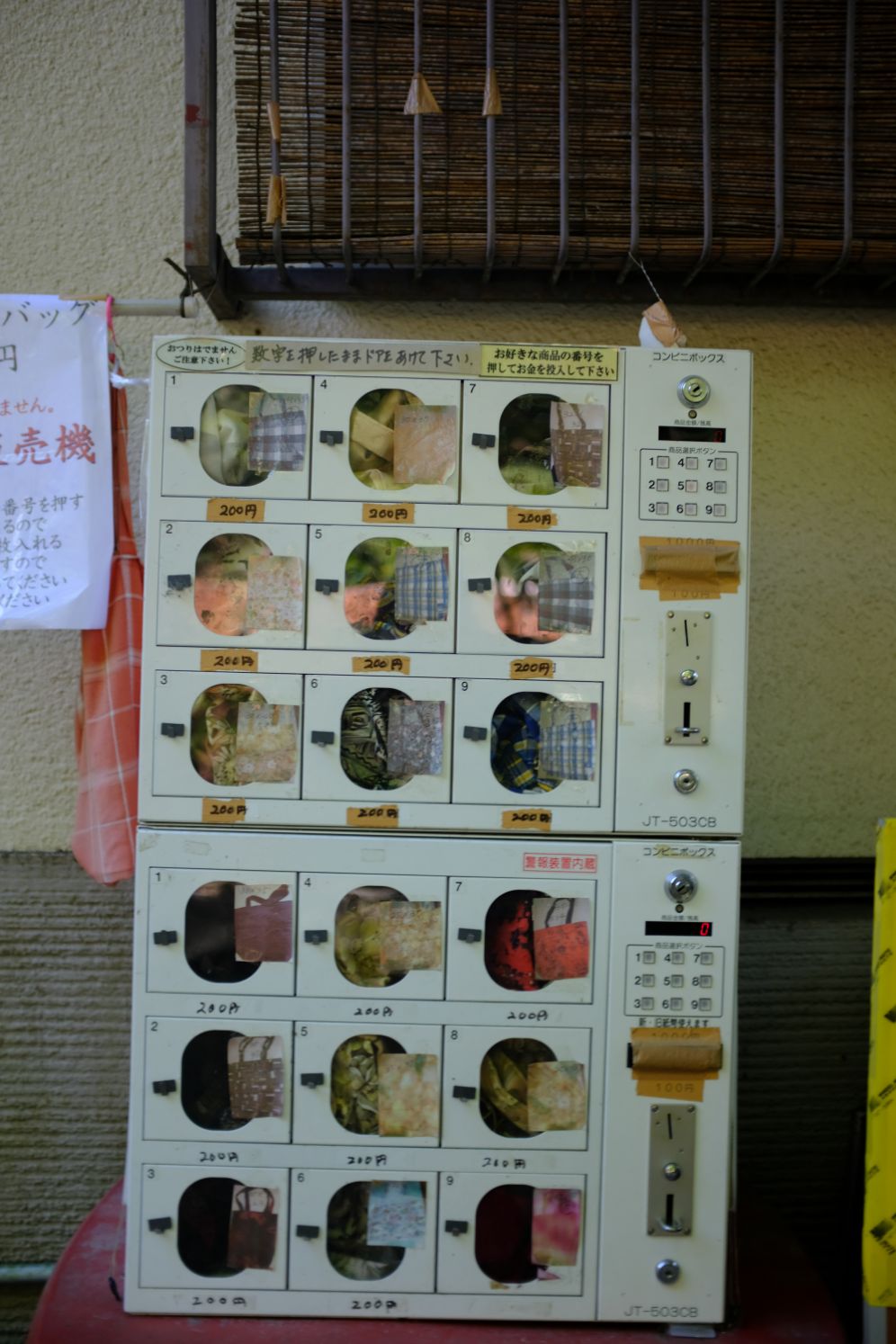 Vending machine selling handmade bags
Vending machine selling handmade bags
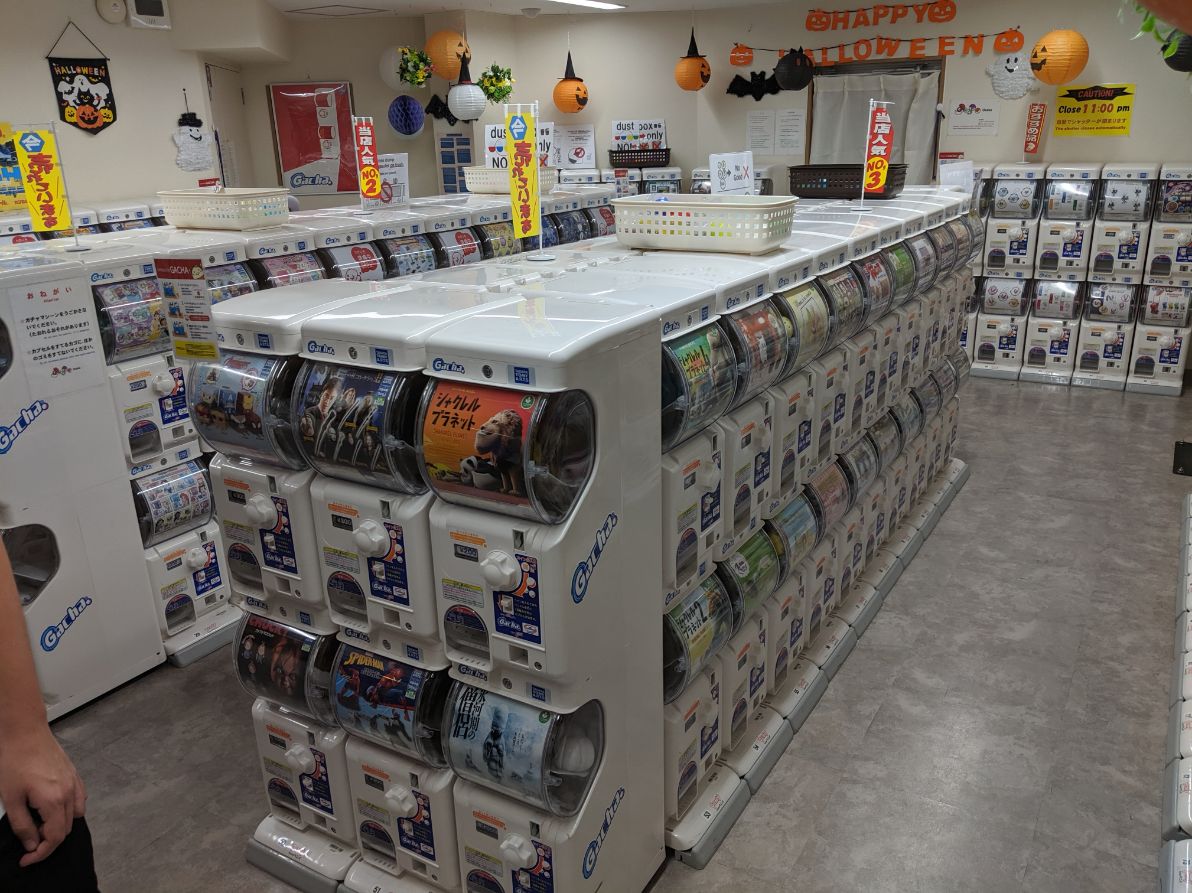 An unattended gacha shop that locked automatically at 11pm
An unattended gacha shop that locked automatically at 11pm
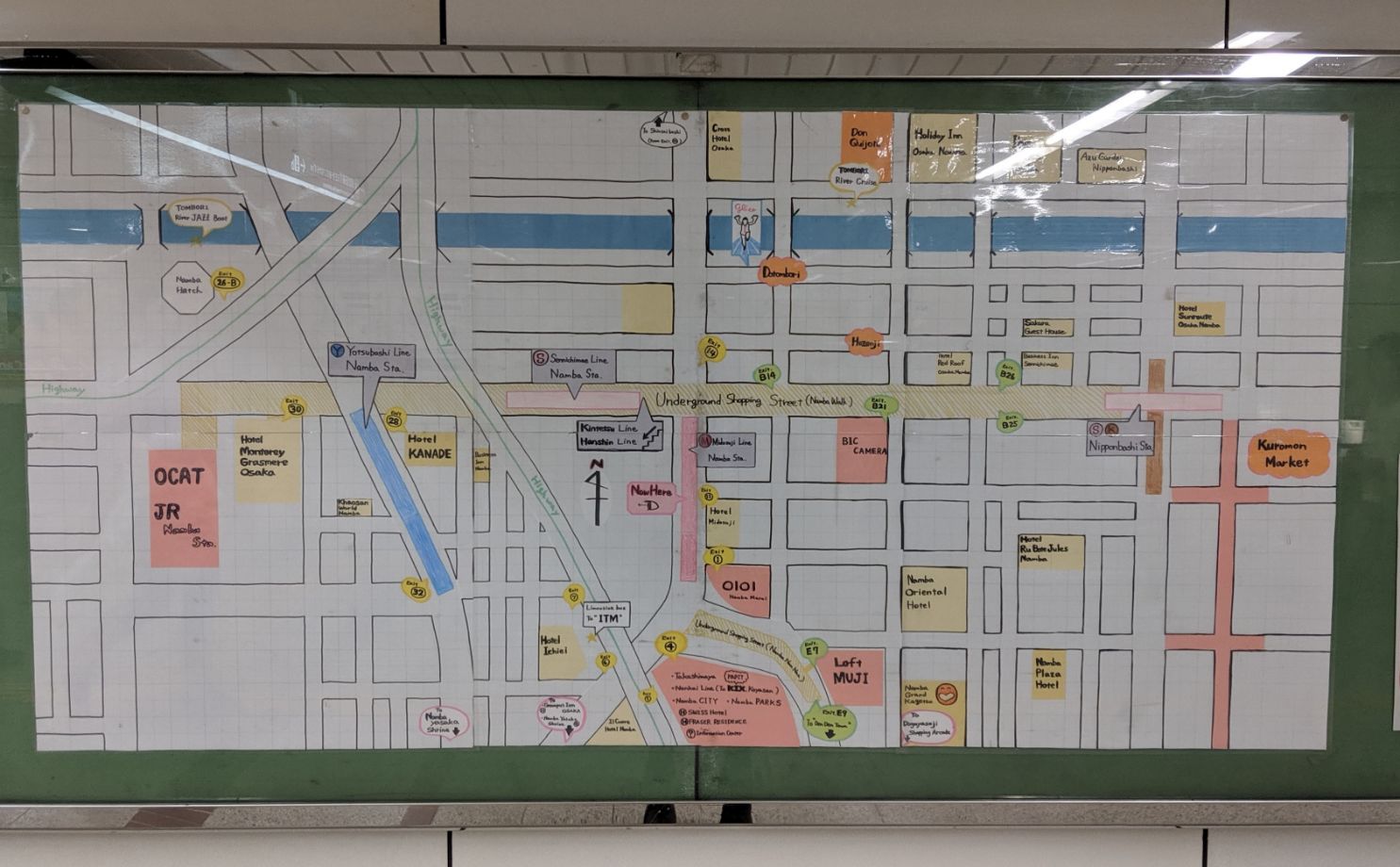 Hand drawn map of the station and local area
Hand drawn map of the station and local area
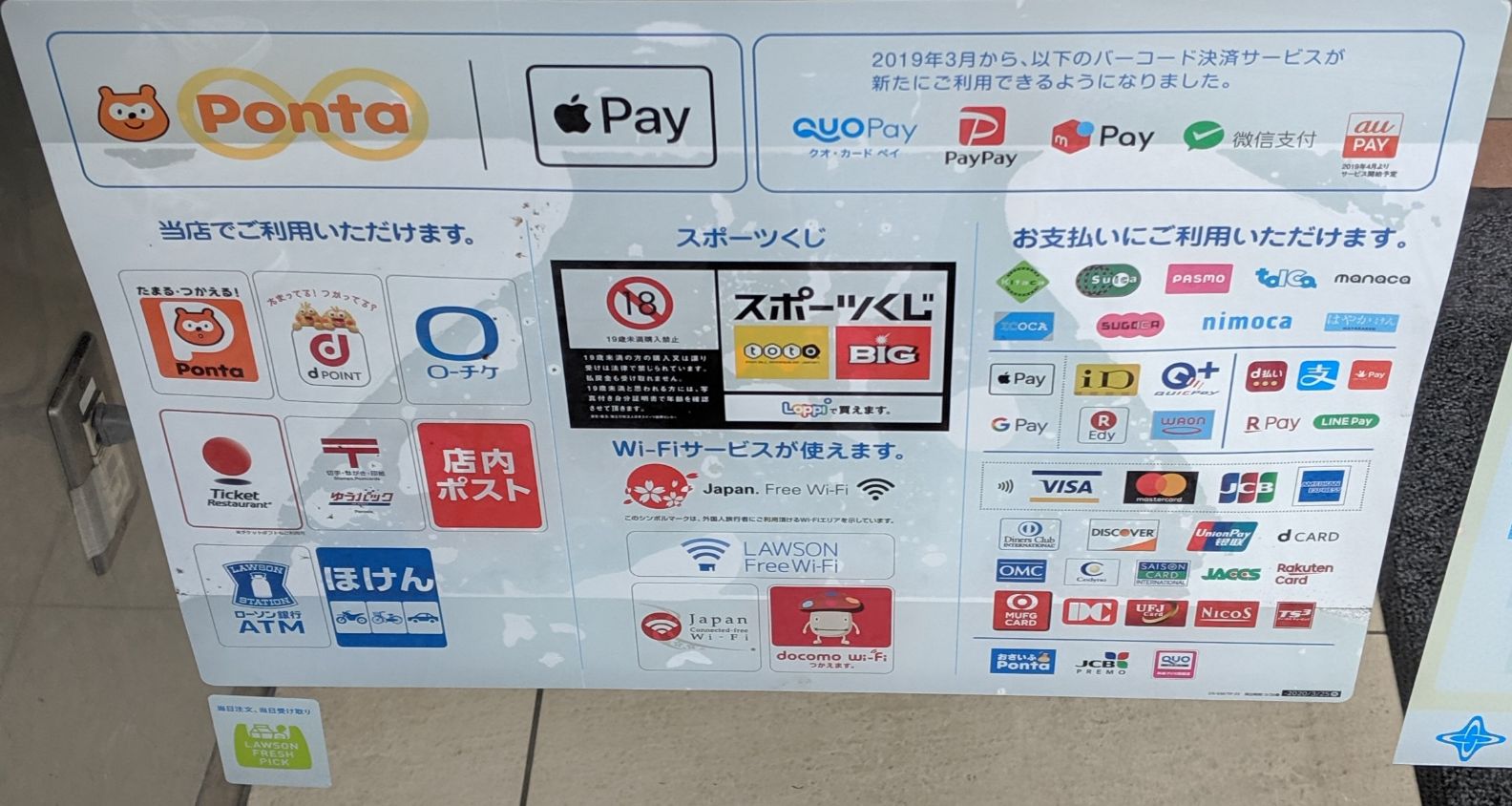 Lots of ways to pay
Lots of ways to pay
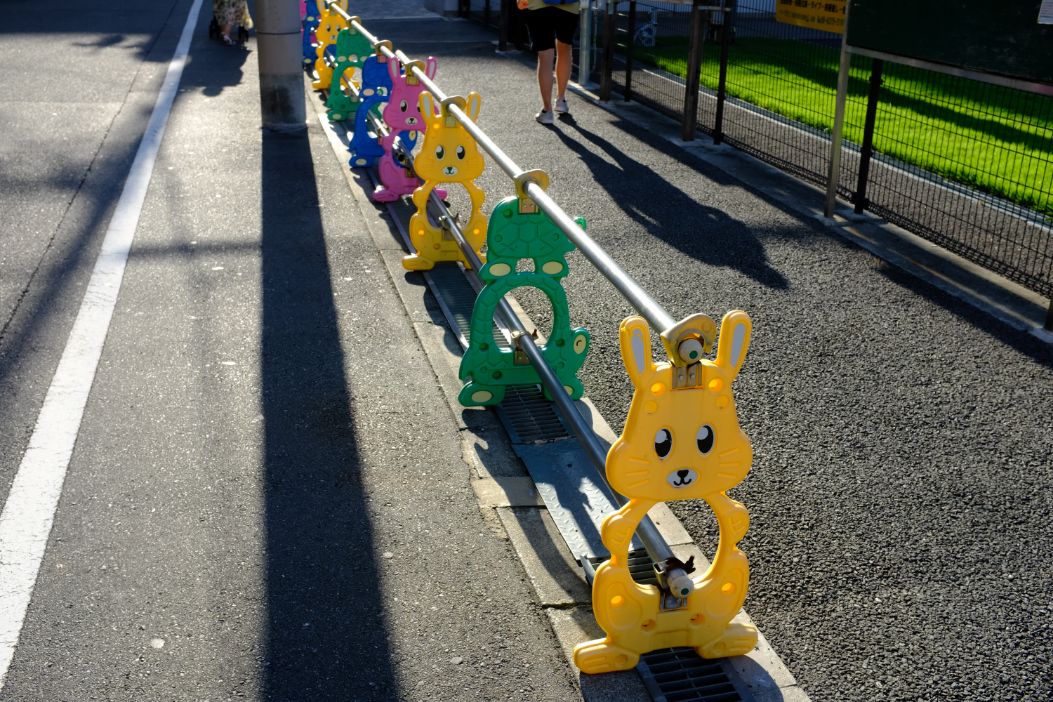 Rabit roadworks
Rabit roadworks